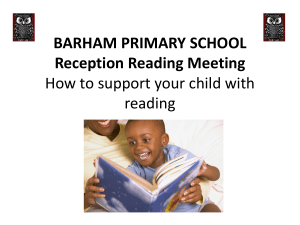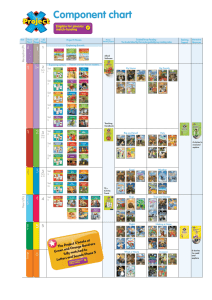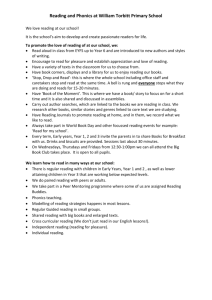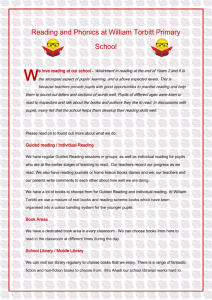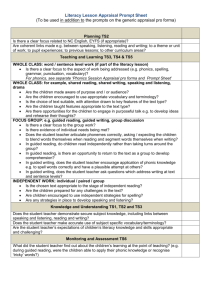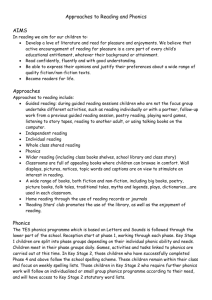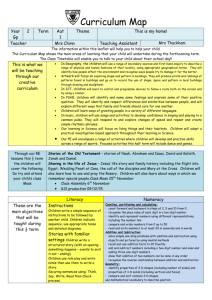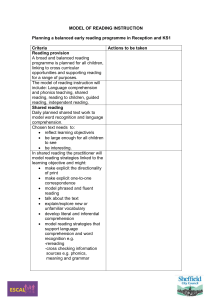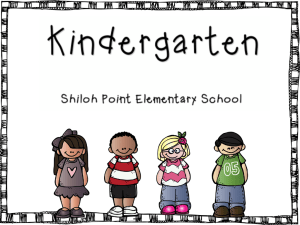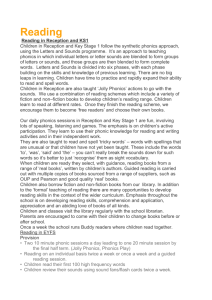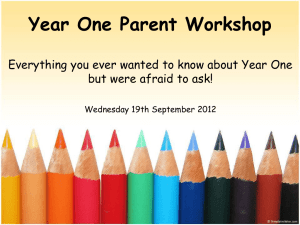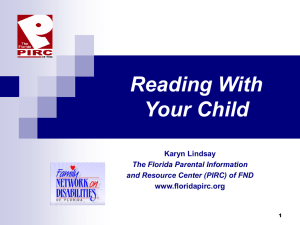Reading Workshop for Parents
advertisement
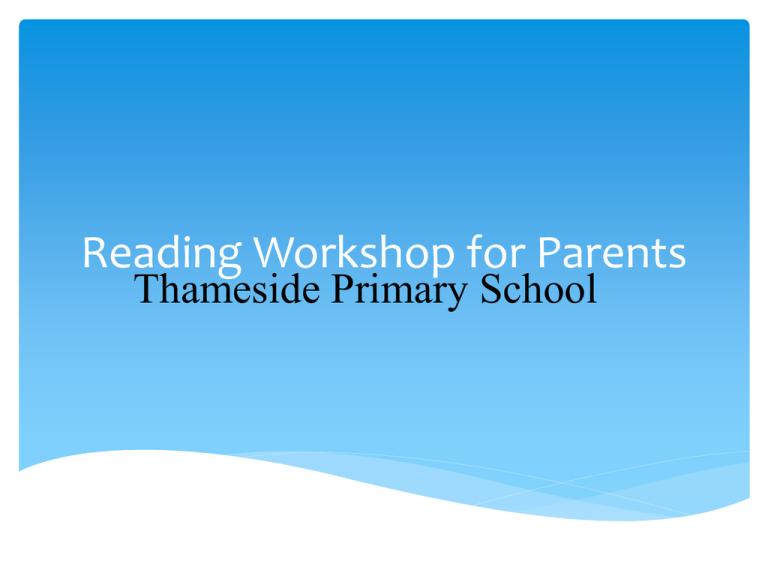
Reading Workshop for Parents Thameside Primary School What is Reading? making meaning of print more than just matching sounds to a letter Can You Read This? ‘Laciate ogni speranza voi che entrate’. may read with practise - matching sounds sounds do not make sense no real reading taking place Fluent Readers... ‘Lextexx xxx xox xxe oxxy xluxx xo uxxxown xoxxs.’ competent readers draw upon a whole host of clues when making meaning out of print Could You Read It? ‘Lextexx xxx xox xxe oxxy xluxx xo uxxxown xoxxs’ ‘Letters are not the only clues to unknown words Reading the Environment not all reading is in books surrounded by print that communicates a message alert your child to uses of print in the environment point out signs and labels Pre Reading Requisites must have a knowledge of language pattern rhyme and repetition vocabulary predictability must have a knowledge of how books work Three Aspects of Reading whole word prediction picture grammar story phonics beginner readers will be practising one or more of these aspects until all three are used Phonics Necessary – but not the only skill needed 20 minute sessions daily for youngest children Sound sheets – practise at home Short sounds ‘b’ not ‘buh’ ‘h’ not ‘huh’ etc Phonics cont What is this word? ghoti ghoti fish ‘f’ as in rough ‘i’ as in women ‘sh’ as in station Learning to Read at School 1:1 reading sessions Literacy lessons shared text guided reading through whole curriculum hearing children is not teaching, but assessment of where to go next Reading at Thameside Personalised reading Target cards Books Timetabled slots for every child at the early stages of reading What happens when? 1:1 reading until level 2 (average for 7 year old) Transition to guided reading 1:1 reading and guided reading Guided reading (at least 4 times weekly) 1:1 reading session Warm up – sound sheet (phonics) or phrase cards (high frequency words) Reminder of target Reminder of story so far Read to, read with, read independently Reminder of target and what to practise at home Guided reading Gives children depth to their understanding. Book Talk Independent reading Questioning Target cards Now have target cards for every national curriculum level up to level 4a (age 13) Remind child, teacher, other adults in school and parent of which cueing system the child is currently practising Should only have one or two targets at any one time From dark pink onwards target card used in guided reading and may be kept in school Target cards At the end of Foundation Stage (reception) – average reader on dark blue/pink At the end of Key Stage 1 (Year 2) – average reader on orange At the end of Key Stage 2 (Year 6) – average reader on pale blue 2pale blue 2 Target cards cont Lower levels – red, yellow, white, dark blue, pink, brown, green, grey - about one long term Levels – orange, black, beige – at least 2 long terms Higher levels – dark pink, pale blue – around 3 long terms Over to you… Any questions A chance to look at the resources
